Eliza Hoxha is bringing a Kosovar house to Venice. The unstable land of the sinking, charming Mediterranean city will host a somewhat different housing style, in what is Kosovo’s third participation at the International Architecture Exhibition — Biennale Architettura.
This year, in its 16th edition, the acclaimed international event is curated by Yvonne Farrell and Shelley McNamara, who have put the spotlight on the concept of ‘freespace,’ the theme of this years’ exhibition.
Hoxha, born in Mitrovica in 1974, is an architect herself and currently teaches at the Faculty of Civil Engineering and Architecture. But she is using this rare opportunity to share with future generations a story that she hopes will remain in Kosovo’s collective memory. “If we don’t do it, who will?,” Hoxha asks.
Her efforts as the curator of the Kosovar pavilion, titled “The City is Everywhere,” focus on bringing in the many layers that shaped what she considers ‘freespace’ in urban Kosovo during the ’90s, a freespace mainly, but not only, found within the walls of private houses.
Her concept, put together with a large team of collaborators, speaks of the freedoms and limitations of Kosovo’s parallel system, and what ‘freespace’ meant under occupation. With thousands of Albanians removed from their jobs during the ’90s, and Slobodan Milošević’s measures of repression, the urban experience was marked by the struggle for survival and the strong sense of solidarity to keep life going.
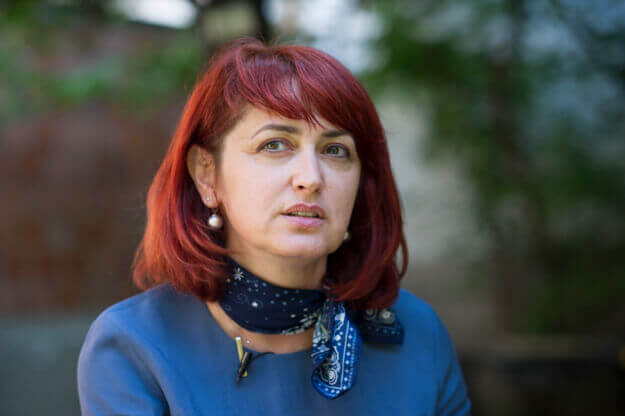
The glimpse of the work that Hoxha has allowed us to see so far speaks by itself, but it also hides a number layers in a play between psychological and physical dimensions.
Kosovo’s house in Venice will be unfinished on the outside, just like many back home, but is filled with elements that are a reminiscence on life in Kosovo in the ’90s. Its ceiling, a symbolic shelter of satellites donated by citizens, is a reminder of the psychological freedom information could offer in this time — a virtual expansion of freedom.
The walls will be comprised entirely of mirrors multiplying the image inside, replicating the multitude of the city inside the home as well as providing a juxtaposing reflection of the visitors themselves within the space, with all its good features and what Hoxha calls its “black holes.”
On the ground, a carpet will reflect two maps of the city: one official, the way the city was with its streets and roads, and one outlining the layout of resistance and ‘parallel’ life. To complement the presentation, the curator has compiled stories on ‘freespace under occupation’ in a book.
K2.0 spoke to Eliza Hoxha to learn more about what has brought her to “The City is Everywhere” and to get an insight of freespace under occupation from her own experiences, from the ’90s to today.
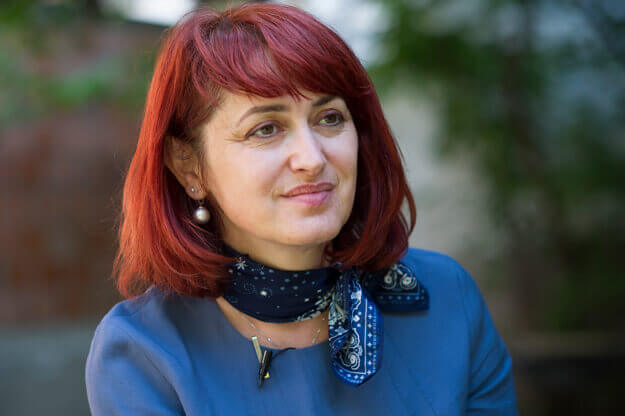
Cristina Marí: How was your own house during the ’90s?
Eliza Hoxha: I used to live in an apartment, so there was no space to open up for others. There were six people in 52 square meters but we managed to live together and share the space among different professions.
There were four kids living in the same house, two of us being musicians, me studying architecture, and the other being more into IT. I used to share my bed with my sister, my parents were in one room, and then my brothers used to sleep in the kitchen — we used this space perfectly.
When I started studying I became a midnight bird as architecture required a lot of work. I would work overnight at the kitchen table and started sleeping in the kitchen as well.
When you grow up and make your own space, you figure out that space is an existential thing and a necessity for all of us. It gives you that freedom to turn your thoughts to yourself from time to time.
“The City is Everywhere” is the title of the Kosovar Pavilion at this year’s Biennale Architettura. The ’90s is a period in which public life, or city life, was experienced at home as well. How did you experience “the city” at the time?
I remember it quite well, but some of the things are vanishing because we don’t talk about them.
At that time it was just something that you have to do: You have to cope with it, you have to survive. Nobody asked why. It was just a collective strategy to cope with the political situation and to deliver new alternative spaces for our needs that we couldn’t fulfil in the regular system.
At that time I didn’t understand it very well. I was very young, I was in the third class of secondary school when we were removed from the schools. But half of high school and then the whole university process I experienced in these new social and education spaces, which were practically all in people’s houses.
What is important to know is that however we used the city before, the moving, the mobility patterns and the points where people gathered or met before, started to disappear and a new pattern of movement, of social gatherings, and new social signifiers and spaces, came out in the cities.
They were all mainly in peripheral areas, because the city was designed as such that public infrastructure and public institutions were mainly in the city center. This whole new pattern of social mobilisation, if you see it from a spatial perspective, came to life in the peripheral area, in the margins of the city, in the edges, because these areas were mainly housing.
All this social mobilisation was a way of surviving culturally and spiritually. At the time, Milošević tackled two main pillars of civil society: education and information. Albanians were allowed to have shops, coffee shops, restaurants, craft shops… You could do whatever you wanted, you could get permission from the municipality very easily to be a craftsman or a shopkeeper.
You could do whatever you wanted.
But from an intellectual point of view you had to learn the curriculum in Serbian, in Cyrillic, and only from the Serbian point of view, be it in history or whatever. We stepped out of that and created our own system, and this produced another city.
If you look at it today, how the city functioned at the time, from a very rational point of view and not an emotional one, it was like a double layered city. Two different communities were using the city differently and in different ways, clustered and gathered and using the spaces in different ways.
If you do an analysis of where the Serbs were living and where they were hanging out or working, and then you add another layer where you see Albanians’ patterns of social mobilisation and active spots of social life for them… Practically it’s a two-layer city.
There were some matches, for example Mother Theresa boulevard. We actually used that space but it was a transit space because there was nothing there anymore. Before, it was the korzo: People were hanging out to see and to be seen. People were clustered and gathered around a certain tree which they had as a meeting point.
This faded away, especially after 1994-95 when the situation started to get worse and we used that space only to protest. So even when we used the public space it was mainly for demonstrating against something, not for being together and socialising with one another.
It is not that public space did not exist for Albanians, because besides using houses as a compensation for the city, for everything that the city facilitated before, there was a production of new public spaces within the city: neighborhoods like Kurrizi, Santea, Qafa. In these spaces there were lots of coffee shops and we used to have a lot of activities, including educational ones, sometimes even exams.
A lot of activities, like art, also started to move outside [their usual] space, art detached itself from being just academic, from this concept that you are only an artist if you are in academia. So actually a lot of alternative and underground movements came out because of the need [to exist], but also because of revolt and protest, and using art as a platform for demonstrating.
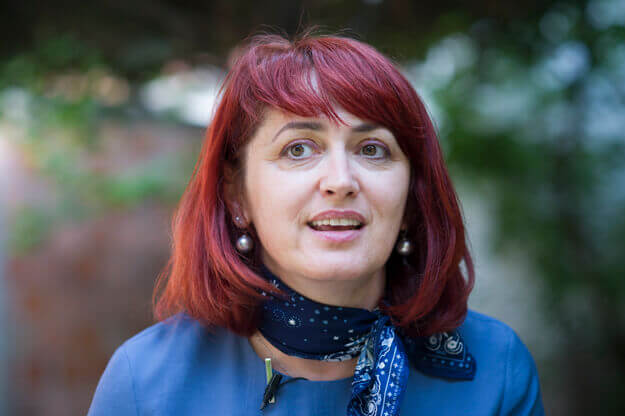
You’re bringing a house to Venice with an unfinished façade on the outside, and with a ceiling of satellites and mirrored walls… a symbolic reminiscence of what the house became during the ’90s, when home became a safe space — a freespace, technically. What brought you to this idea?
First it was the concept of freespace and what freespace is in Kosovo, and I also had an idea of dealing with the ’90s. The social dimension [of this period] is very strong and it is a pity that this does not translate into the physical space. Psychologically there were some free spaces because you felt free, and safer when you were inside these small houses.
You are free in many ways but you are not able to move.
The other [angle] was this comparison between creating a free space during occupation and being free while still feeling occupied in other senses — like in Kosovo today, you are free in many ways but you are not able to move. So how is it to celebrate all this freedom and be closed off, or being free or creating free spaces while you are occupied?
There seems to be an emergence of more and more discussion on the ’90s and there are many initiatives triggering public conversation around what happened during the ’90s. Why do you think this is happening now? Why are you speaking about it now?
Speaking about the ’90s should have come earlier, and not just about the ’90s as a time of resistance and social mobilisation, but also the war at the end. It didn’t happen. Probably we needed time.
[In the meantime] we didn’t deal with problems and now they are becoming bigger. The platform that helped us survive somehow left its black holes, and we didn’t want to see them in a way.
Twenty years later I think it’s about time to start looking at these years and the people that helped all Albanians survive in different ways — everyone that was a part of that process, that gave whatever they had or supported the system in different ways, teachers that used to work in the very beginning without any compensation, and all the others too.
They should be recognised because they contributed to this state of Kosovo today. It’s not just the war. It’s not just the heroes and the people who aren’t here anymore. It’s also these people that helped this layer of society survive — because otherwise not just me, but generations of youngsters would remain uneducated.
You mentioned black holes. In relation to the families that opened their houses to become classrooms and so on, the huge solidarity system where everyone was helping… would you say that this idea of life turning to the house during the ’90s affected how we experience the city today? In the sense that it had an effect in building a society that is more individualist…
I have a word for that. I know that people will not like it but I don’t care. I hate the idea that Albanians come together only when they are in the victim role.
This is what has happened historically. It’s OK to help each other when we lack something and we are in a very bad position. It’s very human. But we forget that we need to have that ability to come together for public good, and for our own good, even today.
“Outside” did not belong to us — what was public was “theirs,” it was not “ours.”
We are in a different position [today] but the state of Kosovo is not just created [by itself]. To be functional as a state we have to do things everyday and not just wait for somebody to do something for us, and then two days later demolish what somebody else did.
I think what was weakened or destroyed during the ’90s is this relation with the “outside.” “Outside” did not belong to us — what was public was “theirs,” it was not “ours.” And then we turned to the inside, which can be a house or a coffee shop, whatever.
We worked a lot with the inside, we cared a lot about everything we had inside up to the threshold. The moment we stepped out — and there is this behaviour still today — it’s something that is not “yours” and doesn’t belong to you. This is something that was crushed, destroyed during that time and we never managed to reshape, rethink or redo that.
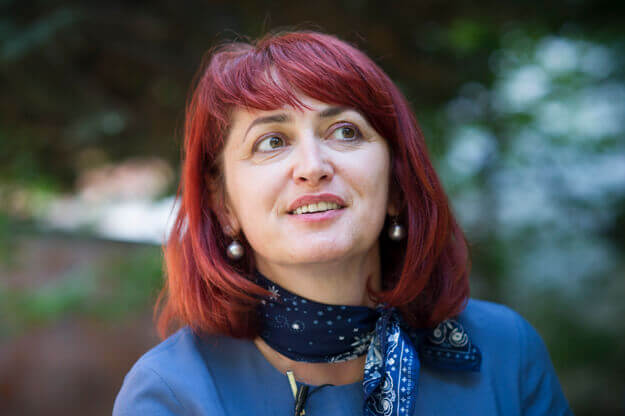
So we all love Kosovo, and we love Prishtina, but nobody wants to take care of anything outside of their private space. There are a lot of active citizens and people trying to raise their voices but it’s still very small. This sense of community that we had before, and the idea of solidarity, is lost. You have problems communicating even in small housing blocks. People don’t know each other. It’s happening for many reasons, and also because it’s hard to survive for many people.
Kosovo has a lot to do in reshaping urban mentality in general, and the sense of community, the sense of belonging. If you work on that, it would create momentum towards creating a collective pride. But to create collective pride we have to work a lot on collective memory — and not just official memory and the history of those in power, but of different stories and memories of different people and actors that used to be part of, or were affected by the process, be it at war or in peace. They have to be recognised as being part of Kosovo history.
If we work more on different perspectives, as we started to in recent years, we create this platform of different stories and making a historical mosaic. I’m not fond of the idea of living in the past but history is important to be taught and to understand all its layers, for every community.
The motto ‘destroying the old, building the new’ is one you have written about in your academic and public work. This Yugoslav motto speaks of the idea of destroying architectural heritage from previous eras, in this case the Ottoman one, and bringing in a more modern architecture. How does the motto apply to the city of the ’90s?
In the ’90s it was not anymore about destroying the old and building the new, it was about trying to find some gaps to build new facilities. There were some housing areas for new Serbs coming to Prishtina, to fill the empty institutions when Albanians were expelled, while the ground floors with shops were run by Albanians. Ironically, it was like that.
The only thing that can be the main signifier as a stamp of the time, as a statement of who was in power, is the church in the university area. The plan for the university campus did not include the church. The church was a proclamation of who was in power.
The church was a proclamation of who was in power.
Nothing else was built, it was mainly informality: add a shop here, transform a garage into a shop or maybe adding a space because it was needed for a classroom. This is how informality began and then it became a lifestyle.
[This informality] boomed after the war and was something that [UNMIK Director of Planning, Reconstruction and Development] Rexhep Luci was trying to stop. After his [unresolved] death, the city really went down, with informality and illegal construction continuing up until recent days. Everybody who built in the city did it in their own interest.
We also have the issue that many of the spaces which were important in this period for the collective memory are also being replaced or simply left behind, destroyed in a way…
This attitude during socialism of “this does not belong to us” was not only held by citizens but also by architects when renovating the city. I don’t know if this was about a lack of knowledge or how we were educated.
During our education in the private houses we didn’t operate on real sites, we had a blank page, a north arrow facing up, and then we did whatever we wanted. We put our ego onto that piece of paper — so no people, no pattern, no other layers of the city. As an architect you have to know the value of different layers of the city and the relevant buildings of a city, which are signifiers of an important period.
Every city is a living organism and there are changes but still there are these important points of collective memory which cities protect because it shows their history. We failed to do this and we’re failing again and again, partly because the voice of the architect is not loud.
Maybe there are also other reasons — everybody wants to have a project with the municipality, or somewhere else because they live off of that. But we cannot forget that besides being an architect we are a citizen of the city.
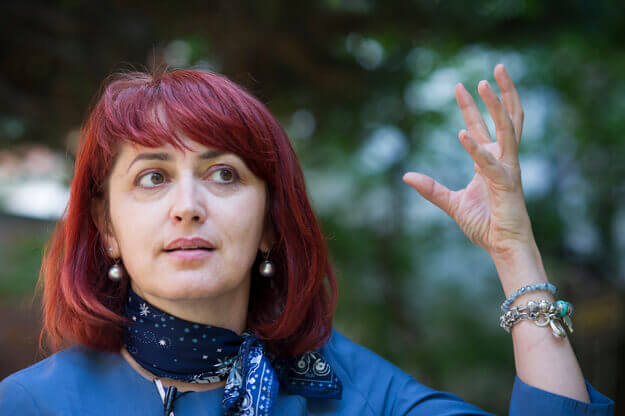
In Kosovo’s last appearance at the Architecture Biennale in 2014, Gëzim Paçarizi presented a work that is also connected, in a way, to collective heritage and memory. You are bringing a project that is presenting collective memory as a relevant and necessary topic ― and there are others. There are some individual architects willing to have a conversation about urban regeneration, and the protection of the city and its memory. Do you think this is just a few isolated individuals or is there a group of city and urban planners really trying to do something?
It’s really up to the individuals to have this good will to discuss the public interest, and then to do something to contribute to this. Or if not contributing at least not to do damage.
Many people don’t speak out because they live off being funded by municipalities, or ministries. Others see architecture and the city as a platform to realise their dreams, and benefitting out of that, building a new building and saying it’s their baby. You have this star architect behaviour everywhere in the world, not just here.
Then you have these advocacy planners, linked more to the social component of the city and the idea of community, who use the community’s needs as their ground floor for starting an idea or working in an area, or highlighting something that is already there. Still in Kosovo it’s down to individuals who believe in the idea of doing something for the public.
Also, there is the issue that architects here are not licensed, so nobody takes responsibility for what they produce if something goes wrong. This is linked to the [lack of] ethics but also to the idea of [not having] an organ [that regulates the profession and holds professionals accountable too].
Coming back to the concept of occupation, it was quite clear in the ’90s who the ‘occupier’ was, and there was a system of violence and oppression in place. But today the occupier has taken multiple shapes. What is occupying the city today?
When I say occupation, in the ’90s it was a political occupation. The theme of ‘freespace’ is not concentrated on the occupation itself, it is concentrated in the production of these spaces within private areas. Today is totally a reversal. There are different phases of occupying space, be it for bad or for good. Be it for commercial or for protesting purposes.
Every group that demonstrates against something or every group that wants to give something to the city, it’s first for the small interest of the group and then for the city. It has to be the other way around.
Everybody wants to grab something, to occupy something for their own benefit. Even today my patterns of walking in the city have changed drastically because of these new bars coming out into the public space which are bigger than the bar inside. Why? Because the municipality gave a permission for that and it’s not illegal, it’s legal. It’s for ‘the benefit of the municipality,’ just because it’s renting some space. There are a lot of people that used that space before, it used to be a green space.
I’m not against the private sector, but the municipality has to ensure that while having the private sector on board, the public benefit is first. In this case it’s just an exchange, it’s rent. And then the municipality can say that it increased the budget. But from where? From [giving away] public space! I feel very angry when I speak about this. Occupation is not political as such, but this is the politics governing the city and we remain inside again.
There are many factors that could explain why citizens have lost their right to the city. What is it for you? Is it the sense of loss of access that we’re talking about, or is it this individualist lifestyle that is also more present globally?
There are a lot of reasons. First, what Prishtina lacked all the time is this idea of belonging. I still have friends who have lived here for 40 years and they say they are from Gjakova. Nobody feels Prishtina is their own city.
The second is this idea that whoever came into power wanted to leave their own legacy. This legacy is not adding new value, but just erasing what was done and doing whatever they want.
The third thing is the idea of the right to the city. I think what we lack is this idea of people knowing that they have the right to say what they think and what they want from their city. They don’t demonstrate it, they don’t manifest it, they just wait for the municipality.
Nobody feels Prishtina is their own city.
From this perspective I can speak both as a citizen and someone who was involved in the planning process, when the institution invites people. They don’t come. If they don’t have a personal issue, or a plot within that area, a personal thing that links them to the issue… they don’t come. Both parties, the communities — citizens, architects, whatever the community affected is — and governmental bodies have to play their role in the city development and in the decision making.
The law on spatial planning requires that the process of planning should be participatory, but it doesn’t happen. In many cases, it is a one way project. You have to bring people in at the beginning of the process and [institutions] don’t do it. If you want to produce a happier, healthier city and an active citizenship, you have to work with people.
Beyond the right to the city, and the loss of access to the city, “The City is Everywhere” is also bringing up the issue of virtual and psychological barriers…
The satellite is a very visible element in the landscape of the city. It shaped us, the way we think, the way we are, it affected the way we see things. The satellite is our head, figuratively. We were physically in Kosovo but our head was totally oriented towards the outside, and we were fed by satellites about what was going on in Kosovo.
It was also a dish of education, alongside the parallel system, and a satellite was also a symbol. If you saw a satellite on a house, you would know that there were Albanians living there. If they didn’t have satellites, neighbors would come to you, especially during the two hours of Albanian news, to drink tea or coffee and watch the news. After 1994-95 it was a mission to have a satellite, maybe they didn’t eat properly but they had a satellite. It was a priority!
The mirror [another element of the pavilion] is again reflecting this idea of openness in the mind, being closed in every house but thinking bigger and creating this optical illusion of a bigger space, and a bigger aim. But at the same it is still a barrier, you are still stuck.
It also works as a juxtaposition — in confrontation with your true self. We have to confront the ’90s and really see the benefits of that solidarity and mobilization of the time, but we also have to see the small black holes and deviations that are today present in our society.
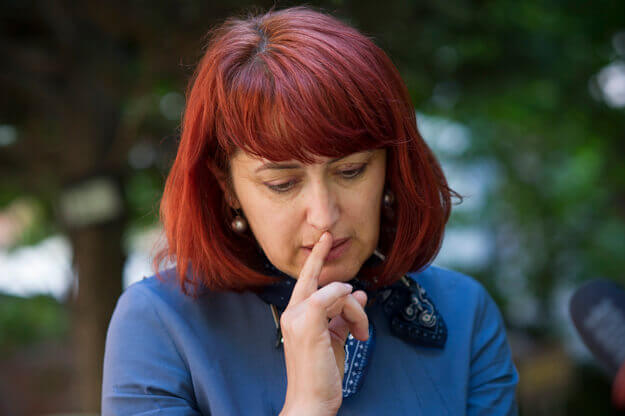
Even in this year of significant anniversaries, there are not a lot of government initiatives that go back to the ’90s and really recognise the work of citizens, teachers, health workers, etc., who helped the life of the society carry on. The pavilion in Venice was commissioned by Jehona Shyti on behalf the Ministry of Culture and has received support from other ministries. Do you see this as an opportunity to somehow pay public homage to all these people?
The ministry delegated this to me, and I presented this idea. They grasped it as such. Personally I see it as creating a momentum to do something about this period and to create an open source with this information that we were capable of collecting, and to do more after the biennale.
This is a unique story and it has to be shown to the world.
Our plan is to create a commemorative plaque for every house that hosted a school in Prishtina. We want to put it on every house. We want to do an open call for every house that may have not been included in the research as well. We want to recognise these people and these houses.
There is a positive reply from the ministry, but even if after the Biennale the ministry can’t do it, I will push it forward with the team we worked alongside. This is a unique story and it has to be shown to the world.
***
This conversation has been edited for length and clarity. The interview was conducted in English and originally written for Kosovo 2.0 and has been republished here with permission.
![Political Critique [DISCONTINUED]](http://politicalcritique.org/wp-content/uploads/2015/09/Political-Critique-LOGO.png)
![Political Critique [DISCONTINUED]](http://politicalcritique.org/wp-content/uploads/2015/09/Political-Critique-LOGO-2.png)